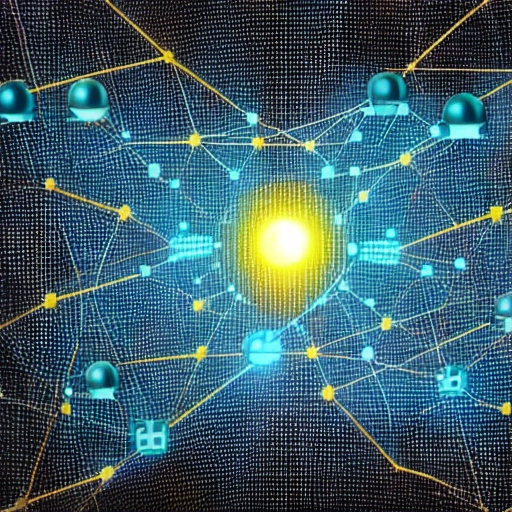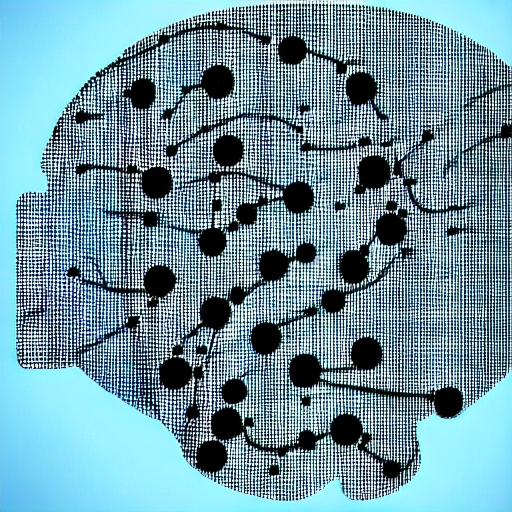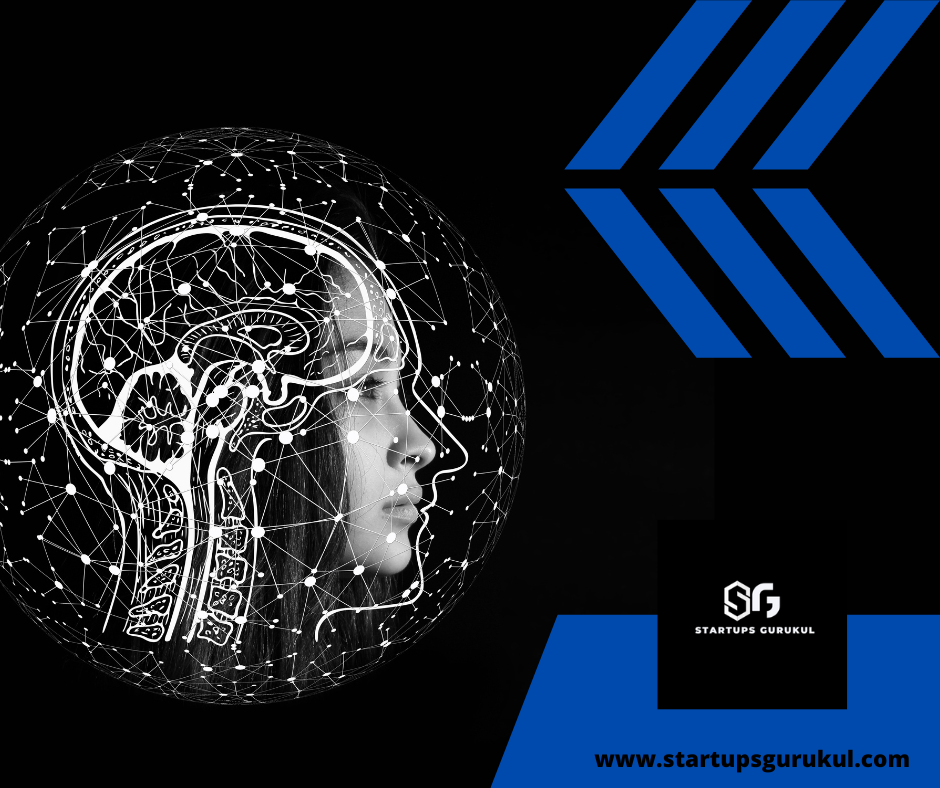In the vast landscape of artificial intelligence, where decisions and predictions play pivotal roles, probabilistic reasoning emerges as a guiding light. This approach brings a nuanced understanding to AI systems, allowing them to navigate uncertainty and make informed choices in complex, real-world scenarios.
Embracing Uncertainty
At the heart of probabilistic reasoning lies the acknowledgment that the world is inherently uncertain. Traditional AI systems often struggle in situations where outcomes are ambiguous or unpredictable. Probabilistic reasoning, however, thrives in this uncertainty, providing a framework for machines to grapple with the inherent fuzziness of the real world.
Probability Distributions as Building Blocks
Central to probabilistic reasoning is the concept of probability distributions. Rather than offering a single deterministic answer, these distributions provide a spectrum of possibilities, each assigned a likelihood. This flexibility enables AI systems to express and manipulate uncertainty in a way that mirrors human decision-making.
Bayesian Thinking: A Pillar of Probabilistic Reasoning
The Bayesian approach is a cornerstone of probabilistic reasoning, offering a systematic way to update beliefs based on new evidence. By continuously refining probabilities as more information becomes available, AI systems equipped with Bayesian reasoning can adapt to evolving situations, mirroring the dynamic nature of the world.
Applications Across Industries
Probabilistic reasoning finds application in diverse fields. In healthcare, it aids diagnosis by considering the likelihood of various conditions based on symptoms and patient history. In finance, it plays a crucial role in risk assessment and portfolio optimization. Autonomous vehicles leverage  reasoning to navigate through unpredictable traffic scenarios.
reasoning to navigate through unpredictable traffic scenarios.
Challenges and Advancements
While probabilistic reasoning enriches AI capabilities, challenges persist. Handling high-dimensional data, computational complexity, and the need for large-scale training datasets are among the hurdles. Recent advancements, including probabilistic programming languages and neural network architectures designed for uncertainty, are pushing the boundaries of what probabilistic reasoning can achieve.
Real-World Examples
To illustrate the power of probabilistic reasoning, consider a weather prediction model. Instead of providing a single forecast, the model generates a probability distribution, indicating the chances of different weather outcomes. This nuanced approach aligns more closely with the unpredictable nature of weather patterns.
The Human-Machine Partnership
Probabilistic reasoning not only enhances AI performance but also fosters a more transparent and collaborative relationship between humans and machines. By presenting results in probabilistic terms, AI systems empower users to make more informed decisions, understanding the level of uncertainty associated with each outcome.
Looking Ahead
As AI continues to evolve, probabilistic reasoning stands as a beacon illuminating the path toward more robust and adaptable systems. Embracing uncertainty, leveraging probability distributions, and integrating Bayesian thinking are key steps in building AI that can navigate the intricacies of the real world with finesse.
In conclusion, probabilistic reasoning in artificial intelligence is not just a technical nuance but a paradigm shift. It’s a shift from rigid determinism to flexible, adaptive decision-making—a leap that brings machines closer to emulating the nuanced reasoning of the human mind in the face of uncertainty.
Uncertainty Quantification
Probabilistic reasoning excels at quantifying uncertainty, providing not just a binary answer but a spectrum of possibilities. This quantification is crucial in decision-making processes where understanding the level of confidence in predictions is as important as the predictions themselves.
Incorporating Contextual Information
One of the strengths of probabilistic reasoning is its ability to seamlessly incorporate contextual information. Whether it’s in natural language processing, computer vision, or any other AI application, considering the context enhances the accuracy of predictions. Probabilistic models can weigh different contextual cues and adjust probabilities accordingly.
Continuous Learning and Adaptation
Probabilistic reasoning aligns with the idea of continuous learning. AI systems employing this approach can adapt to changing environments by updating their probabilities based on new observations. This adaptability is particularly valuable in scenarios where static models might struggle to maintain relevance over time.
Decision-Making Under Constraints
In real-world scenarios, decisions often come with constraints and trade-offs. Probabilistic reasoning enables AI systems to make decisions that consider not only the likelihood of outcomes but also the associated costs, risks, and benefits. This holistic decision-making approach is essential in fields like robotics, where physical constraints play a crucial role.
Handling Incomplete Information
In many practical situations, complete information is elusive. Probabilistic reasoning provides a framework for dealing with incomplete information, allowing AI systems to make reasonable decisions even when some data is missing or uncertain. This is particularly valuable in medical diagnoses where not all symptoms may be present or measurable.
Ethical Considerations
The transparency offered by probabilistic reasoning carries ethical implications. Understanding the uncertainty associated with AI predictions is crucial for users to trust and interpret the system’s output. This transparency is a key factor in responsible AI development, ensuring that users are well-informed about the limitations and potential biases of the technology.
Hybrid Approaches
In some applications, combining deterministic and probabilistic approaches can yield powerful results. Hybrid models leverage the strengths of both paradigms, providing the accuracy of deterministic models where possible and the flexibility of probabilistic models in handling uncertainty. Striking the right balance is an ongoing area of research.
Probabilistic Robotics
In the realm of robotics, probabilistic reasoning finds extensive use. From mapping environments with uncertain features to localizing a robot within a space, probabilistic robotics allows machines to navigate and interact with the world in a way that mirrors human spatial reasoning, incorporating uncertainties inherent in the physical environment.
Scalability Challenges
Despite its advantages, scalability remains a challenge for some probabilistic reasoning approaches, especially in high-dimensional spaces. Efficiently handling large datasets and complex models is an active area of research, with advancements needed to make probabilistic reasoning more accessible in resource-intensive applications.
Collaborative Decision-Making
Probabilistic reasoning fosters collaborative decision-making between humans and AI systems. By presenting probabilities and uncertainties, AI becomes a collaborative partner, aiding human decision-makers rather than replacing them. This collaborative approach is crucial in applications like finance, where human expertise is complemented by AI’s analytical capabilities.
In the ever-evolving landscape of artificial intelligence, probabilistic reasoning stands as a versatile tool, addressing challenges and opening avenues for more sophisticated and human-like decision-making. Its integration into AI systems not only enhances their performance but also contributes to a future where machines and humans collaborate seamlessly in navigating the complexities of our world.
Bayesian Networks: Graphical Models for Probabilistic Reasoning
Within probabilistic reasoning, Bayesian networks offer a graphical representation of probabilistic relationships among a set of variables. These directed acyclic graphs capture dependencies, aiding in modeling complex systems and facilitating efficient inference. The ability to represent and update beliefs about various variables makes Bayesian networks a powerful tool in AI applications.
Ensemble Methods and Probabilistic Forecasting
Ensemble methods, combining predictions from multiple models, align well with probabilistic forecasting. By generating an ensemble of models with different initial conditions or hyperparameters, AI systems can provide not only a single prediction but a distribution of predictions, offering insights into the range of possible outcomes.
Coping with Noisy Data
In real-world scenarios, data is often noisy and subject to uncertainties. Probabilistic reasoning enables AI systems to handle noisy data gracefully. By assigning probabilities to different data points or considering uncertainty in measurements, these systems can make more robust predictions and classifications in the face of imperfect information.
Calibration of Probabilistic Models
Ensuring that the probabilities assigned by a model accurately reflect the true likelihood of events is crucial. Calibration techniques in probabilistic models help fine-tune the predicted probabilities, aligning them with observed frequencies. Well-calibrated models are essential in applications where users rely on probability estimates for decision-making.
Probabilistic Graphical Models in Computer Vision
In computer vision, probabilistic graphical models play a vital role. They enable machines to perceive and interpret visual information with a level of uncertainty, mimicking the way humans navigate ambiguous or partially obscured scenes. This approach is particularly valuable in tasks like object recognition, where probabilistic reasoning aids in handling diverse visual conditions.
Evolutionary Algorithms and Probabilistic Optimization
Probabilistic reasoning extends into optimization problems through the integration of evolutionary algorithms. These algorithms, inspired by natural selection, introduce randomness in the search for optimal solutions. By incorporating probabilistic elements, they excel in handling complex, multimodal optimization challenges in various domains, from engineering to finance.
Explainability and Interpretability
Probabilistic models contribute to the explainability and interpretability of AI systems. By providing probabilities for different outcomes, these models offer a clear rationale for their predictions. This transparency is crucial, especially in sensitive applications like healthcare or criminal justice, where understanding the reasoning behind AI decisions is paramount.
Transfer Learning with Probabilistic Models
Transfer learning, a technique where a model trained on one task is adapted for a related task, can benefit from probabilistic reasoning. Probabilistic models can handle the uncertainty introduced during the transfer, allowing AI systems to leverage knowledge gained in one domain for improved performance in another, even when the domains exhibit variations.
Human-AI Collaboration in Probabilistic Design
In design and creative fields, probabilistic reasoning facilitates collaboration between humans and AI. By understanding and incorporating uncertainties in design decisions, AI systems become creative partners, assisting designers in exploring alternative solutions and anticipating potential challenges.
Societal Impacts and Bias Mitigation
Understanding the societal impacts of probabilistic models is critical. These models must be designed and evaluated with an awareness of potential biases, ensuring fair and equitable outcomes. Ongoing research focuses on developing techniques to identify and mitigate biases that may arise in probabilistic reasoning systems, particularly those trained on historical data.
Counterfactual Reasoning and Causal Inference
Probabilistic reasoning extends to counterfactuals, allowing AI systems to explore “what-if” scenarios. This is crucial in causal inference, where understanding the impact of interventions or changes is essential. Probabilistic models enable the assessment of counterfactual outcomes and contribute to more informed decision-making in fields such as healthcare, economics, and policy analysis.
Dynamic Bayesian Networks for Time-Series Analysis
In time-series analysis, dynamic Bayesian networks offer a probabilistic framework for modeling changing relationships over time. These networks can capture evolving dependencies, making them valuable in predicting future states or events. Applications range from financial market predictions to environmental monitoring, where understanding temporal dynamics is paramount.
Anomaly Detection and Probabilistic Models
Probabilistic models excel in anomaly detection by capturing the normal variation in data. Whether it’s identifying fraudulent transactions, detecting faults in machinery, or recognizing unusual patterns in user behavior, these models leverage probability distributions to distinguish normal from abnormal occurrences, enhancing the robustness of AI systems in dynamic environments.
Quantum Probability and Quantum Computing
At the forefront of cutting-edge research, quantum probability integrates quantum computing principles into probabilistic reasoning. Quantum algorithms offer new ways to process and analyze probabilistic information, potentially revolutionizing AI capabilities. This intersection opens avenues for solving complex problems more efficiently, such as optimization challenges or large-scale probabilistic simulations.
Probabilistic Programming Languages
Probabilistic programming languages, like Pyro or Stan, enable developers to express probabilistic models in a high-level syntax. This approach simplifies the implementation of complex probabilistic models, making them more accessible to a broader audience. These languages facilitate rapid prototyping and experimentation, accelerating advancements in probabilistic reasoning.
Meta-Learning and Probabilistic Models
In meta-learning, where models learn from multiple tasks to generalize better, probabilistic approaches provide a natural fit. Probabilistic meta-learning allows AI systems to adapt to new tasks with limited data by modeling the uncertainty in task distributions. This is particularly valuable in scenarios where the AI system encounters diverse and evolving challenges.
Neurosymbolic Integration
The fusion of symbolic reasoning and neural networks, known as neurosymbolic integration, benefits from probabilistic models. This approach combines the strengths of both paradigms, allowing AI systems to reason symbolically while handling uncertainty using probabilistic representations. This synergy contributes to more robust and explainable AI systems.
Probabilistic Fairness and Bias Mitigation
Addressing bias in AI systems is a critical concern, and probabilistic models play a role in advancing fairness. By explicitly modeling and mitigating biases, these models contribute to creating more equitable AI systems, especially in domains where biased outcomes can have significant societal consequences, such as hiring or lending practices.
Probabilistic Reasoning in Natural Language Processing
In natural language processing, probabilistic models aid in language understanding, generation, and translation. Probabilistic context-free grammars and language models incorporating uncertainty enhance the accuracy and fluency of AI-generated text. This is crucial in applications like chatbots, sentiment analysis, and language translation services.
Cybersecurity and Probabilistic Intrusion Detection
Probabilistic models find application in cybersecurity, particularly in intrusion detection systems. By analyzing network traffic patterns and user behaviors probabilistically, these systems can identify potential security threats and anomalies, contributing to the ongoing battle against cyberattacks and ensuring the integrity of digital infrastructures.
Fuzzy Logic and Probabilistic Reasoning
The integration of fuzzy logic with probabilistic reasoning offers a comprehensive approach to handling uncertainty. Fuzzy logic, which deals with partial truths and degrees of certainty, complements probabilistic models by providing a linguistic framework for expressing uncertainty. This synergy is particularly beneficial in domains where imprecise information is prevalent, such as decision-making in ambiguous environments.
Hyperparameter Tuning with Probabilistic Methods
Optimizing the hyperparameters of machine learning models is a crucial step in achieving optimal performance. Probabilistic methods, including Bayesian optimization, provide a principled approach to hyperparameter tuning. By modeling the uncertainty in the performance landscape, these methods guide the search for optimal hyperparameter configurations more efficiently, saving computational resources and accelerating model development.
Probabilistic Models for Explainable AI
Explainability is a key aspect of trustworthy AI systems. Probabilistic models contribute to explainable AI by offering a natural way to convey uncertainty and rationale in predictions. This transparency enhances user understanding, fostering trust and facilitating the deployment of AI systems in critical applications, including healthcare diagnostics and autonomous vehicles.
Reinforcement Learning with Uncertainty
In reinforcement learning, where agents learn by interacting with an environment, incorporating uncertainty is essential for robust decision-making. Probabilistic reinforcement learning frameworks, such as Bayesian reinforcement learning, enable agents to account for uncertainty in their environment models, improving adaptability and performance in dynamic and unpredictable scenarios.
Spatial Probabilistic Models in Geographic Information Systems (GIS)
In GIS applications, spatial probabilistic models assist in representing and analyzing uncertainty in spatial data. From mapping environmental phenomena to assessing the reliability of geographical predictions, these models contribute to more accurate decision-making in fields like urban planning, natural resource management, and disaster response.
Self-Supervised Learning with Probabilistic Approaches
Self-supervised learning, where models learn from unlabeled data, benefits from probabilistic approaches. By capturing uncertainty in the learning process, these models can navigate diverse and unstructured datasets more effectively. This is particularly advantageous in scenarios where labeled data is scarce or expensive to obtain.
Quantum-Inspired Probabilistic Graphical Models
At the intersection of quantum computing and probabilistic reasoning, quantum-inspired probabilistic graphical models leverage quantum principles to enhance computational efficiency. These models offer a potential bridge between classical and quantum computing, opening up new possibilities for solving complex probabilistic reasoning problems with advanced computing architectures.
Human-Robot Interaction and Probabilistic Intent Recognition
In robotics, understanding human intent is crucial for safe and effective collaboration. Probabilistic intent recognition models enable robots to infer and predict human intentions, considering uncertainties in observed behaviors. This capability is vital in scenarios ranging from assistive robotics to industrial settings where humans and robots work in close proximity.
Probabilistic Methods in System Reliability Engineering
Assessing and improving the reliability of complex systems is a challenging task. Probabilistic methods, such as reliability block diagrams and fault tree analysis, aid in modeling and analyzing system reliability. These approaches help identify critical components, anticipate potential failures, and design systems with enhanced robustness in sectors like aerospace, energy, and telecommunications.
Game Theory and Probabilistic Decision-Making
In game theory, probabilistic models contribute to strategic decision-making by incorporating uncertainty into player actions and outcomes. This extends the applicability of game theory to real-world scenarios where incomplete information and uncertainty play significant roles, such as in competitive business environments or security strategies.
Looking Ahead
As AI continues to evolve, probabilistic reasoning stands as a beacon illuminating the path toward more robust and adaptable systems. Embracing uncertainty, leveraging probability distributions, and integrating Bayesian thinking are key steps in building AI that can navigate the intricacies of the real world with finesse.
In conclusion, probabilistic reasoning in artificial intelligence is not just a technical nuance but a paradigm shift. It’s a shift from rigid determinism to flexible, adaptive decision-making—a leap that brings machines closer to emulating the nuanced reasoning of the human mind in the face of uncertainty.
In the ever-evolving landscape of artificial intelligence, probabilistic reasoning stands as a versatile tool, addressing challenges and opening avenues for more sophisticated and human-like decision-making. Its integration into AI systems not only enhances their performance but also contributes to a future where machines and humans collaborate seamlessly in navigating the complexities of our world.
As probabilistic reasoning continues to evolve, its integration into diverse AI applications brings forth a rich tapestry of techniques and considerations. From Bayesian networks to ensemble methods and applications in computer vision, the journey of probabilistic reasoning in artificial intelligence unfolds with the promise of more robust, adaptable, and ethically sound systems.
The expansive reach of probabilistic reasoning continues to unfold, shaping the landscape of artificial intelligence with its applications across diverse domains. From quantum computing to meta-learning and neurosymbolic integration, the journey of probabilistic reasoning is marked by innovation, addressing complex challenges and propelling AI toward greater heights of sophistication and adaptability.
The fusion of  with fuzzy logic, hyperparameter tuning, explainable AI, and various specialized domains showcases the versatility and adaptability of probabilistic models across a broad spectrum of AI applications. As research and innovation continue, these integrations pave the way for more sophisticated, trustworthy, and context-aware artificial intelligence systems.
with fuzzy logic, hyperparameter tuning, explainable AI, and various specialized domains showcases the versatility and adaptability of probabilistic models across a broad spectrum of AI applications. As research and innovation continue, these integrations pave the way for more sophisticated, trustworthy, and context-aware artificial intelligence systems.







